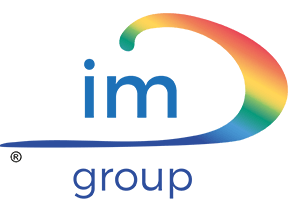Money laundering is a multifaceted criminal phenomenon with profound financial, economic, and social implications. It is a global problem and poses a significant threat to businesses around the world that requires constant attention and evolved regulatory and digital systems in place to combat it, known as ‘anti-money laundering‘.
What is money laundering
Money laundering, which is considered a multi-offense crime due to the amount of legal assets it offends, is defined by Art. 648 bis of the Penal Code as the set of operations put in place to hinder the identification of the criminal origin of money, goods or other utilities of illicit origin, in order to make the traces of their provenance disappear. As the people put it, money or other assets, are ‘washed’ and transformed into legal wealth, available to be used out in the open.
It is often linked to the activities of organized crime and terrorism, takes various forms, often very creative ones, that undermine, prevaricate and threaten the economic ecosystem on different scales, from local to global, depending on the scale of the laundering itself. At the local level it has a pronounced economic-social implication, as it affects the economic structure of a district, altering relationships based on fair competition, the proper functioning of markets and the physiological mechanisms of resource allocation, allowing organized crime to infiltrate deeply into the fabric of the local economy and allowing it greater control of the territory.
Obviously, banks and highly qualified traders are among the preferred intermediaries to clean up the masses of illegal capital. As of August 28, 2019, the new customer due diligence requirements for combating money laundering and terrorist financing defined by Bank of Italy Order dated July 30, 2019, came into effect. Banks, financial companies and trust companies, electronic money and payment institutions and other intermediary entities had to carry out checks based on the risk profile of customers, identified according to internal schemes.
AML, a global fight
AML is a crucial issue for financial institutions that, in a globalized economy, can only be addressed globally.
Since 1989, the OECD has created the Financial Action Task Force on Money Laundering (FATF), an intergovernmental body that aims to define and promote strategies to combat money laundering, nationally and internationally. Its benchmark principles are reported and periodically updated in the document ‘International Standards on Combating Money Laundering and the Financing of Terrorism & Proliferation’.
Many of its principles have been inspiring the local action of local States including our own. In 2007, the Financial Intelligence Unit (FIU) for Italy was established at the Bank of Italy by Legislative Decree No. 231, in accordance with international rules and criteria that require the presence of a Financial Intelligence Unit (FIU) in each state. It is an office with intelligence, data collection, monitoring, prevention, and security tasks, and is endowed with full operational and management autonomy, with functions to combat money laundering and terrorist financing.
Prevention is the most powerful weapon of anti-money laundering policies, a cornerstone principle of it is the risk assessment approach, which allows calibrating strategies and allocating resources for prevention purposes, which today rely heavily on technologies. RegTech, a neologism created by the “fusion” of the English terms “Regulation” and “Technology,” has been talked about for a few years now, identified by the UK’s FCA (Financial Conduct Authority) as a subset of Fintech, focused on developing technologies that can facilitate the achievement of objectives on the regulatory side with greater efficiency and effectiveness than existing solution.
AML and GRC
The progressive increase in anti-money laundering requirements, such as the assessment of the risk profile of customers for financial institutions, together with the large amount of data and information that needs to be processed in order to carry out an activity that complies with what is required by the regulations, requires innovative digital tools capable of materializing an action to prevent and combat money laundering.
The starting point is the elaboration of the risk profile, which today is based, as far as possible, on artificial intelligence algorithms and computer procedures.
In this direction, a digital and data-driven Governance, Risk Management and Compliance (GRC) strategy can also prove to be very effective for AML, involving all actors in corporate governance and helping the organization to understand and deal with critical issues, operating within legal, social and ethical boundaries.
Governance, in particular, is called upon to establish corporate procedures to identify, estimate and limit the risks associated with money laundering activities. In addition, it is important to establish a corporate culture that promotes full integrity with respect to financial transactions.
The importance of internal and tech-driven procedures
By implementing an effective GRC strategy in an AML function, organizations can identify the concrete money laundering dangers they face and take appropriate mitigation measures. There are various methodologies for identifying potential risks, including customer data analysis (highly effective when using well-trained artificial intelligence), coupled with review of existing policies and procedures, suspicious financial transaction monitoring systems, which enable early detection of anomalous behavior so that it can be countered in real time and act predictively more effectively.
Parallel to technological implementations, fostering a culture of compliance with applicable laws and regulations is another key element: companies should establish an official AML policy that is clear and easily understood by all employees and that outlines specific procedures within the company. This is an area where appropriate and regular staff training on regulations related to this issue should be provided, to help employees recognize money laundering situations so that they can take appropriate measures to prevent it.
Internal whistleblowing tools that allow employees to confidentially report money laundering situations are also useful in this direction: whistleblowing channels must be reliable and easily accessible to all, ensuring that whistleblowers are adequately protected.








